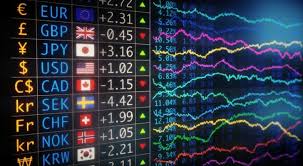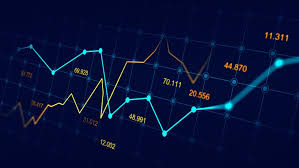
Revolutionizing Forex Trading with Cutting-Edge Software
Forex trading has evolved dramatically over the years, particularly with the advent of sophisticated trading software solutions. Such innovations play a pivotal role in shaping how traders engage with the foreign exchange market. Whether you are a beginner or an experienced trader, understanding the capabilities of Forex trading software is crucial for maximizing your potential profits. In this article, we will delve into various aspects of Forex trading software, including automation, analysis tools, and their impact on trading strategies. For comprehensive insights and resources, visit forex trading software https://exbroker-argentina.com/.
1. The Importance of Forex Trading Software
The Forex market operates 24 hours a day, making it an incredibly dynamic and fast-paced environment. To navigate this complexity, traders require tools that can provide real-time analysis, automate responses to market changes, and manage their portfolios effectively. Trading software allows users to monitor price movements, analyze market trends, and execute trades automatically, thus saving time and reducing the emotional strain associated with manual trading.
2. Types of Forex Trading Software
There are primarily two types of Forex trading software: desktop trading platforms and web-based trading platforms.
2.1 Desktop Trading Platforms
Desktop platforms are installed on personal computers and offer comprehensive functionality, including technical analysis tools, charting capabilities, and order execution features. Popular desktop platforms include MetaTrader 4 (MT4) and MetaTrader 5 (MT5), which are known for their user-friendly interfaces and extensive libraries of trading indicators.
2.2 Web-Based Trading Platforms
Web-based platforms can be accessed from any device with internet connectivity, making them a flexible choice for traders on the go. They might not have as many advanced features as desktop platforms, but they often include essential tools for monitoring trades and managing accounts effectively.
3. Key Features of Forex Trading Software

3.1 Automated Trading
One of the most significant advancements in Forex trading software is automation. Traders can create algorithms or use pre-built bots to execute trades based on specific criteria. Automated trading systems can minimize human error and ensure that trades are executed at the optimal times.
3.2 Technical Analysis Tools
Technical analysis is a fundamental aspect of Forex trading. Advanced software provides charting tools, indicators, and the ability to conduct back-testing on trading strategies. These features enable traders to make informed decisions based on historical data and current market trends.
3.3 Risk Management Features
Effective risk management is vital in trading, and many software platforms incorporate features such as stop-loss orders, take-profit levels, and risk-reward calculators. These tools help traders manage their exposure to risk and protect their capital.
4. Choosing the Right Forex Trading Software
Selecting the right trading software is essential for achieving trading success. Here are some criteria to consider:
4.1 User-Friendly Interface
Software should be intuitive and easy to navigate, especially for beginners. A steep learning curve can discourage users and result in missed trading opportunities.
4.2 Compatibility

Ensure that the software is compatible with your operating system and any devices you plan to use. Also, consider whether the platform supports multiple languages and has mobile applications for trading on the go.
4.3 Integration with Other Tools
Look for platforms that allow integration with other tools, such as forex signals or news feeds. This capability can provide traders with a more comprehensive view of the market.
5. The Role of Artificial Intelligence in Forex Trading Software
Artificial Intelligence (AI) is becoming increasingly prevalent in Forex trading software. With machine learning algorithms and predictive analytics, AI systems can analyze vast amounts of market data and identify patterns that would be impossible for humans to discern. This technology helps traders make more informed decisions and can increase earning potential.
6. The Pros and Cons of Using Forex Trading Software
6.1 Advantages
- Enhanced efficiency through automation.
- Real-time market analysis and trading capabilities.
- Access to advanced analytical tools and indicators.
- Improved risk management and control.
6.2 Disadvantages
- Dependence on technology – potential technical issues can arise.
- Risk of over-optimization of trading strategies.
- Software can be costly, based on subscriptions and fees.
7. Conclusion
Forex trading software has transformed how traders operate in the foreign exchange market. The right software can enhance trading efficiency, provide valuable insights, and ultimately contribute to financial success. As technology continues to evolve, the future of Forex trading will undoubtedly be shaped by the advancements in software solutions that support and empower traders around the globe. By understanding the capabilities and features available, traders can choose the tools that best suit their strategies and goals.
